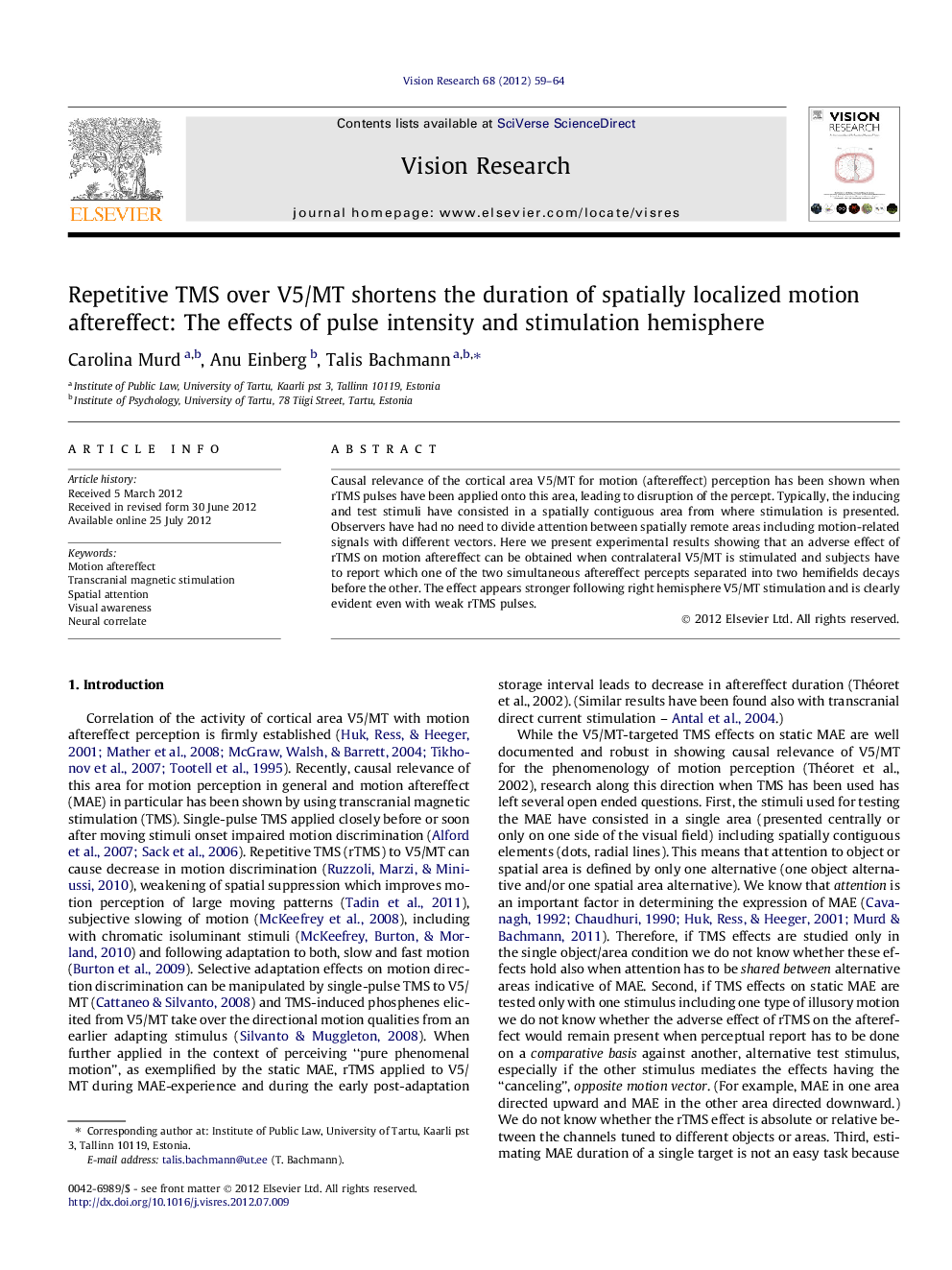| Article ID | Journal | Published Year | Pages | File Type |
|---|---|---|---|---|
| 4033928 | Vision Research | 2012 | 6 Pages |
Causal relevance of the cortical area V5/MT for motion (aftereffect) perception has been shown when rTMS pulses have been applied onto this area, leading to disruption of the percept. Typically, the inducing and test stimuli have consisted in a spatially contiguous area from where stimulation is presented. Observers have had no need to divide attention between spatially remote areas including motion-related signals with different vectors. Here we present experimental results showing that an adverse effect of rTMS on motion aftereffect can be obtained when contralateral V5/MT is stimulated and subjects have to report which one of the two simultaneous aftereffect percepts separated into two hemifields decays before the other. The effect appears stronger following right hemisphere V5/MT stimulation and is clearly evident even with weak rTMS pulses.
► Subjects report which of the two separate localized motion aftereffects fade earlier. ► Right- and left-hemisphere V5 is stimulated by rTMS at the start of aftereffect. ► rTMS leads to a faster decay of the contralateral aftereffect. ► The effect is clearly pronounced with right hemisphere rTMS by weaker pulses. ► The results are discussed in relation to the involvement of attentional mechanisms.
